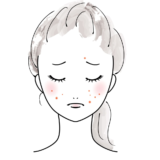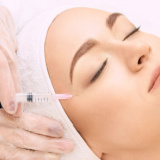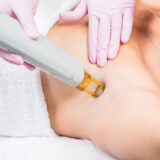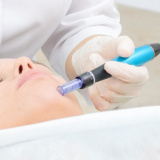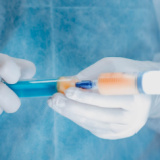Fat injections, fat grafting (not covered by health insurance)
- Progressive unilateral facial atrophy (Romberg's disease)
- Aging has caused the cheeks, temples, and eye area to become scaly, lack luster, and lose their firmness and luster.
- Received breast reconstruction with silicone for breast cancer, but silicone contours are showing and bothering me.
We offer autologous fat grafting and fat injection for patients with the above symptoms. The method of transplanting one's own fat has a long history of use and has no reported side effects. The transplanted or injected fat is fully grown in the area and becomes part of the patient's own body.
Treatment Method:
It is performed under local anesthesia by injection.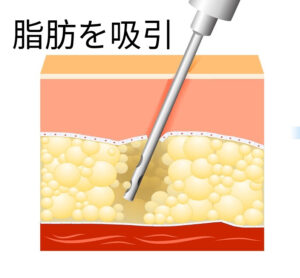
Fat is suctioned from the thighs and other parts of the body with a needle.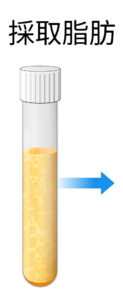
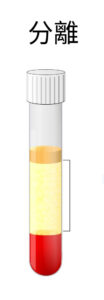
Remove anesthetic fluid, red blood cells, and other substances mixed with the aspirated fat.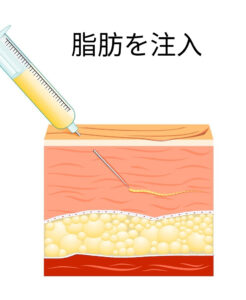
Inject fat into pre-marked facial depressions and reshape them. The following is a list of the most common problems with the "C" in the "C" column.
Our clinic is rather characterized by the number of cosmetic visits by older patients. There are no age restrictions for fat injections. However, patients with pacemakers, patients who have difficulty with withdrawal of anticoagulants, and patients on steroids may not be able to undergo the procedure. Fat grafting and fat injections are safe procedures. Our goal is to keep your skin looking younger than your actual age for as long as possible.
Suzuki of our clinic (KAKEN - Researchers at KAKEN - Yoshihisa Suzuki (30243025) (nii.ac.jp) ) (Yoshihisa Suzuki - My Portal - researchmap ) ([Researcher Data] Yoshihisa Suzuki | Japanese-research.com (research-er.jp) has been working on stem cells since the late 1990s. His specialty is neural and mesenchymal stem cells. Based on the results of his research at Kyoto University, he pioneered the transplantation of stem cells in the treatment of spinal cord injury patients. Currently, we are continuing the treatment at Da Nang Hospital in Vietnam, a Southeast Asian country with a high incidence of spinal cord injuries.(in Japanese history)Spinal Cord Injury Treatment Specialist Saves Young Vietnamese! Japanese medicine will save the world! |Nikkei Special - Future Century Zipangu : TV TOKYO (tv-tokyo.co.jp) (See Section 2.1.2.).
The handling of the cells to be transplanted has a significant impact on the viability rate. Cell viability varies considerably even if the isolation of neural and mesenchymal stem cells from experimental animals is done by a graduate student in a medical school. Passing cells through thin tubes and centrifuging them is an act that places a load on the cells and should be minimized. The treatment reflects our experience in stem cell research to date.
The procedure is performed under local anesthesia, so there will be some pain during the injection of anesthesia. For medical safety reasons, we do not use general anesthesia. Although we take the utmost care in cell separation to inject and transplant as many viable cells as possible, not all of the injected and transplanted cells will be viable. In addition, the cellular engraftment rate varies depending on the patient's condition. It also depends on the age of the patient and the site of implantation. Even if a large amount of cells are injected and transplanted at one time, the cells may not be fully implanted and may become lumps. The appropriate amount to inject is at the discretion of the physician. The cells will decrease over time for approximately six months after the injection implantation. After six months, the cells are completely part of the body and do not decrease in volume thereafter.

